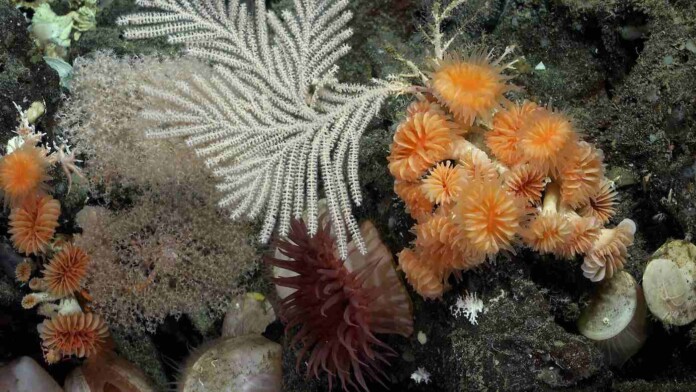
Pristine Coral Reefs Discovered Are Thousands of Years Old And Teeming With Life | Travel News
The well-known biodiversity and scientific significance of the Galapagos Islands extend far beneath the surface, as a recent deep-water expedition has unveiled. The Schmidt Ocean Institute's international mission has brought to light the existence of two unspoiled cold-water coral reefs flourishing on the walls and bases of seamounts situated more than 1,000 feet below the ocean's surface.
Traditional tropical coral reefs typically thrive within 120 feet of the water's surface, with rare instances of them occurring at greater depths. In this case, these are cold-water corals, sometimes referred to as "stony corals," and they were found at depths ranging from 1,200 to 1,375 feet (370 to 420 meters).
The larger of the two reefs stretches over 800 meters, equivalent to the size of eight football fields, while the second, smaller reef spans 250 meters. These reefs exhibit a diverse array of stony coral species, suggesting they have likely been forming and supporting marine biodiversity for thousands of years.
The inhabitants of these reefs include sea fans and stony corals from the Hexacorallia subclass, which consists mostly of deep-sea corals and sea anemones.
These are the second and third deep-sea coral reefs discovered in the Galapagos Island Marine Reserve, following the initial discovery earlier this year by scientists aboard a research vessel from the Woods Hole Oceanographic Institution.
The Schmidt expedition, led by Dr. Katleen Robert of the Fisheries and Marine Institute of Memorial University of Newfoundland and Labrador, began in September and involved 24 scientists from 13 organizations and universities. It lasted 30 days.
Apart from its scientific value, this information serves as a strong basis for making decisions that protect these ecosystems, ensuring the preservation of the biological diversity they host in an ever-changing environment, as noted by Danny Rueda Córdova, director of the Galápagos National Park Directorate.

One of the expedition's objectives was to use laser scanning technology to create highly detailed maps of these reefs and the seamounts on which they thrive, achieving an impressive 2-millimeter resolution.
In addition to studying coral biodiversity in the Galapagos, the scientists explored areas within the Isla del Coco National Marine Park, a protected area managed by Costa Rica.
The team investigated seamounts southwest of Isla del Coco and studied the connections between coral communities on seamounts in the Galapagos and those in Costa Rica. During one of the remotely-operated submersible dives, the researchers observed multiple deep-sea coral species laden with eggs.
This research contributes valuable data to support the management of the Eastern Tropical Pacific Marine Corridor, a network of interconnected marine reserves managed by the governments of Ecuador, Costa Rica, Panama, and Colombia.
The Galápagos Marine Reserve is a region of extraordinary biological significance, linked to partner marine protected areas across the Eastern Pacific. The discovery of these deep and long-lived reefs brings us closer to understanding the hidden dimensions of ocean diversity and the role that deep habitats play in maintaining the health of our oceans, as noted by Charles Darwin Foundation's CEO, Stuart Banks.
These exciting findings continue to provide critical research to inform the improved management of existing and future marine protected areas in the region.


